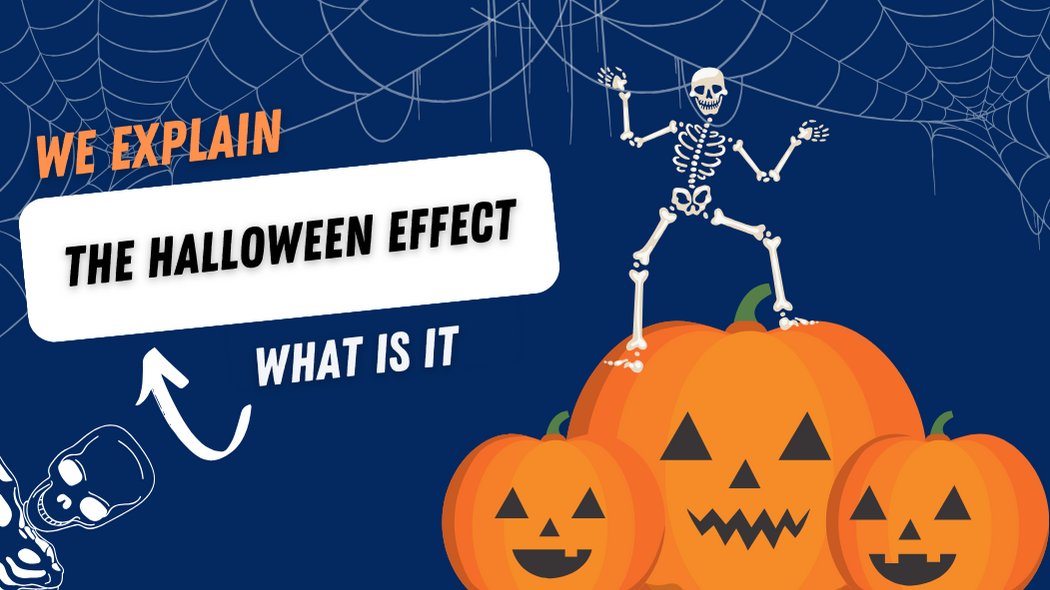There are weird trends that occur with the trading world.
This includes financial peculiarities like the January barometer, Mark Twain Effect, July Effect, Santa Claus rally, and the Super Bowl indicator.
Hidden among all the different rules in the world of money and investing, there’s one thing that happens around Halloween called the “Halloween Effect.”
What is the Halloween effect?
Halloween is the day of costumes and candy, happening every October 31. The Halloween Effect is a bit like a trick-or-treat surprise for investors. It suggests that, from October 31 to May 1, there’s a good chance that stocks and assets like Bitcoin might do better. In other words, you could make potential profits by buying them at the end of October and selling them in April.
This idea was brought to life by two named Sven Bouman and Ben Jacobsen. They looked at the way markets behaved in the past and wrote a book about it called the “The Halloween Indicator, ‘Sell in May and Go Away’: Another Puzzle” . They found that, instead of just holding onto your investments all year, using the Halloween effect could be more profitable.
How did the effect get started?
Now, let’s travel back in time to 16th-century London, where this idea seems to have started. Local investors and newspapers had a saying: “Sell in May and Go Away.” This advice spread even outside of England. The idea was that you should take a break from investing during the summer months. Bouman and Jacobsen, using their research, found that this idea worked better in the winter months, from November to April. It’s like the market takes a nap in the summer and wakes up in the winter, ready to make money.
But why does this happen? Why does the market behave differently during these months?
There are many ideas, but one of them is something called the “Efficient Market Hypothesis” (EMH). This hypothesis suggests that when new information comes into the market, it quickly affects prices. People have also come up with other reasons, like news, data mining, and things like interest rates and vacations.
But after lots of research, Bouman and Jacobsen came to a pretty common conclusion: the timing of summer vacations. Many professional investors take a break during the summer, which could affect the market.
Does the phenomenon really work?
Well, if we look at the history of the stock market, especially in the US, we can see some interesting things. It seems like using the Halloween effect could actually make you more profits than just by using the buy and hold strategy.
For example, if you followed the Halloween effect by buying something like the S&P 500 in November and selling it in April, then putting your money into something safe like a 13-week T-bill, you could make around 10.85% on average. That’s better than the 9.93% you’d get with the buy-and-hold strategy. So, it’s like a little a cheat for the clever investor.
How does the Halloween effect affect crypto?
At first, it seemed like the Halloween effect didn’t work with crypto.
But in 2015, something surprising happened. The price of Bitcoin started going up on October 31 and didn’t stop until May 2016, giving people a nice 41% rise. This was like a treat for crypto investors.
And it didn’t stop there. In the next Halloween season, from October 31, 2016, to May 1, 2017, Bitcoin’s price went up even more, giving investors a whopping 117% return. In 2022, Bitcoin also played along with the Halloween effect. Its price jumped up on October 31, but it also came down later. In 2018, Bitcoin went up by 52% during the Halloween season.
But it’s not just Bitcoin. Other cryptocurrencies like Ethereum and Cardano also danced to the Halloween tune. In 2020, Ethereum went up by 206%, and Cardano reached a peak of 291% during the Halloween season. It’s like the Halloween effect is casting its spell on the world of crypto.
So, what about this year, 2023? Many investors are hoping for a Halloween treat, especially in the crypto world. The 2023 Halloween season starts on October 31 and goes until May 1, 2024.
Final thoughts on the Halloween effect
While some people still debate whether it’s really magic, it does seem to point the way to better times in the financial world. Smart investors often put their money into safe assets for the other six months of the year. So, whether you’re new to investing or have been at it for a while, the Halloween Effect is a trusted secret, but use it with caution or you might end up getting tricked..
